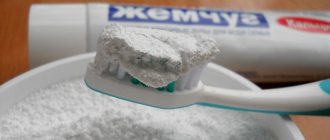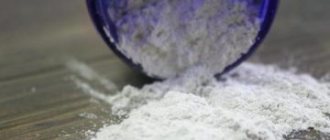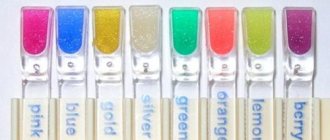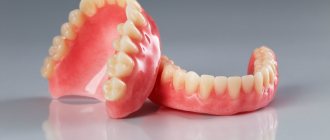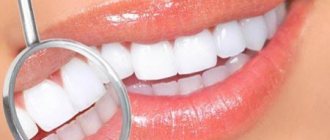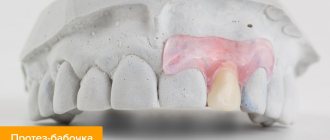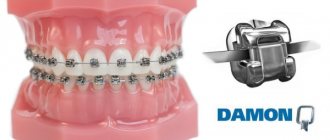A do-it-yourself tooth powder recipe at home with a reminiscent effect will be discussed in this article! My Remineralizing Toothpaste is one of my most visited posts and I have received many emails from people who have tried it for themselves. After my wife and I remineralized our teeth, I definitely started looking into natural toothpastes and a maintenance diet.
The only downside to my homemade toothpaste is that it can leave a residue on the sinks and the coconut oil can cause problems. I also recently discovered the many benefits of healing clays and wanted to figure out how to use these clays for oral hygiene, but there were some specific problems with the clays and coconut oil.
Some of my favorite toothpaste recipes today:
Teeth whitening with activated carbon
DIY toothpaste and the benefits of saliva
How to make toothpaste from baking soda
Oil pulling for dental health
I was wondering if healing tooth powder would work and I couldn't make it work better. It's easier to make than toothpaste, and you can use ground herbs and spices instead of essential oils, which saves money.
Causes of destruction of hard tissues
Here are the main provoking factors for the occurrence of a harmful process - demineralization:
- unhealthy diet (excess fast carbohydrates and sugar);
- aggressive liquids (carbonated lemonades, energy drinks, concentrated juices);
- diseases of the endocrine system;
- mechanical damage (bruxism, impacts, biting hard foods);
- the chemical composition of saliva and its consistency;
- insufficient hygiene.
How can you strengthen your teeth enamel? This question is relevant for many. If some factors (for example, poor hygiene) are easy to eliminate, then others, one way or another, will have to be taken into account and their impact reduced in accessible ways.
Why this particular tooth powder recipe?
The main ingredient in this tooth powder is bentonite clay, which I have recently become a big fan of. Not only does it bind and extract heavy metals and toxins (a huge plus for the mouth!), but it is also alkaline and loaded with minerals. It can be taken orally to remove toxins, so it is safe to use in the mouth and contains calcium, magnesium and silica to nourish your teeth! According to mountain rose grass:
Bentonite is very unusual in that once it becomes hydrated, the electrical and molecular components of the clay quickly change and produce an "electrical charge." Its greatest strength lies in its ability to absorb toxins, impurities, heavy metals and other internal contaminants. The structure of bentonite clay helps it attract and absorb poisons on its outer wall and then slowly draw them into the inner center of the clay, where it is stored in a kind of storage.
To state it differently...
Bentonite is a swelling clay. When it is mixed with water, it quickly swells like a highly porous sponge. From here, the toxins are drawn into the sponge through electrical attraction and once there, they bind.
It is also extremely gentle and has a mild taste for children. I also use bentonite clay for face masks, healing poultices, and to naturally dry my hair to preserve color.
Other ingredients also help keep your mouth clean:
Baking soda is alkaline and contains minerals. It also helps remove stains.
Calcium powder provides extra calcium to provide minerals and whiten. Crushed cloves are naturally antibacterial and taste great.
Cinnamon is also antibacterial, tastes great, and inhibits the growth of bacteria in the mouth.
Mint tastes great and is soothing to gums.
Xylitol is completely optional and adds sweetness. Make Your Own Inexpensive Tooth Powder for Clean Teeth Without Chemicals
Natural Dental Care Products
18.03.2019
It is believed that the more civilized people are, the healthier their teeth should be, because they are armed with the most advanced methods for caring for them. However, in reality it turns out that this is not the case. Most Russians, unfortunately, are forced to regularly visit the dentist: few can boast of healthy and strong teeth.
But our wise Slavic ancestors, as history and archaeological excavations by scientists show, for the most part had healthy and beautiful teeth - the found skulls of ancient people of past centuries had a full composition of healthy teeth. And this despite the fact that ancient people did not know about the existence of dentists, drills, toothpaste, toothbrushes and chewing gum. But they knew how to care for their teeth using available natural remedies.
Tooth loss in ancient times was an infrequent occurrence, and in most cases it happened during battles and battles.
The main reason why the teeth of our ancestors were healthier than ours with modern capabilities and technologies is a different diet.
Firstly, their diet was dominated by raw and coarse food, not subjected to heat treatment, predominantly plant-based and, of course, natural. Such food supplied the ancestors’ body with vitamins and also contributed to the health of their teeth. Ancient people, unlike modern people, did not know what processed foods, fast food, sugar and many chemical additives and preservatives were. They gnawed hard roots and fruits - the load on their teeth was much greater than ours. Modern society prefers soft and sweet foods.
Secondly, ancient people did not eat as often as we do now. They did not have snacks between main meals in the form of tea with chocolate or sweet gingerbread.
Thirdly, scientists have found that ancient people also took care of their teeth. Nature came to their aid in this.
By the way, man is the only living creature on the planet who needs to take special care of his teeth. Animals have a simpler approach to this - they chew and gnaw grass and tree branches, apples, carrots and thus get rid of food debris between their teeth. Birds help some predators with this.
Instead of a toothbrush
The toothbrush, roughly in the form in which we know it today, was invented not so long ago, in 1498 in China. Then it was modified many times.
The Chinese invention consisted of attaching the bristles of a Siberian boar to a bamboo stem. A brush was used without toothpaste or cleansing powder. The greatest demand was for bristles from the animal's backbone: it was believed that the bristles there were the strongest and toughest. The bristles were not attached perpendicular to the handle, as on modern toothbrushes, but parallel.
The invention eventually spread beyond China. In Russia, such a brush was called a “toothbroom.” This instrument was the companion of every boyar during the time of Ivan the Terrible, especially at royal feasts.
Peter I obliged all boyars to brush their teeth with crushed chalk and a damp cloth so that disfiguring scratches would not remain on the enamel after brushing. The mechanism was as follows: a small handful of crushed chalk was applied to a rag soaked in water, and then the teeth were rubbed with it.
Later these brushes appeared:
And only in the 20th century the first specialized toothbrushes appeared...
And before all these inventions, a variety of objects were used to clean teeth in Rus'. The main thing is that they are small and thin enough to penetrate the interdental space. You can still brush your teeth using these methods to this day – they will be healthier. So take note.
Bunches of grass
At first these were ordinary bunches of grass. Fresh grass was plucked and the teeth were carefully “polished” with it.
Through chewing, the grass turns into small, soaked cellulose fibers. Each fiber, like a brush, cleans the teeth. Moreover, grass juice is alkaline. It is best to chew cereal grasses: wheat, rye, oats, wheatgrass, ryegrass, bluegrass, timothy, fescue, etc.
To impart medicinal properties and a pleasant aroma, a leaf of yarrow, mint, St. John's wort, oregano, thyme or a sprig of rowan, willow, bird cherry, serviceberry are added to the cereals; herbs are selected individually, according to preferences. In summer it is better to chew them, and in winter to make decoctions and tinctures from them. Dried raspberry leaves, lemon balm shoots, marshmallow roots, pine needles...
It’s worth mentioning separately about pine needles, or rather pine needles, because this is a natural toothbrush, toothpaste and deodorant in one, so to speak, bottle.
Everyone is accustomed to thinking that pine needles are prickly and therefore unsuitable for such a delicate task. It turns out they are still suitable. They contain spinning fibers. This is what makes a bunch of pine needles soft after light chewing. And it turns out to be a soft shaving brush or brush for cleaning teeth. And fresh breath after such cleaning lasts all day.
Making a toothbrush from pine needles is very simple. Go to the pine tree, take a bunch of green pine needles or a small twig. Rinse it properly. For ease of use, so that the needles do not fall apart, tie them with thread. The brush is ready. You can chew it. Everything is very simple, free of charge and most importantly we get an effect that no modern toothpaste can achieve.
This is an indispensable remedy in the treatment of gum diseases. For example, you can treat periodontal disease in the following way: wash a pine or cedar twig and chew it along with the pine needles. This process will involve the jaw muscles, whose movement draws blood to the gums. The beneficial substances contained in pine needles and wood will act on the gums, enamel and the oral cavity as a whole. It is advisable to repeat this chewing daily, and it is better to make it one of the healthy habits: to prevent caries and gum disease.
Toothpicks
Also in Rus', teeth were cleaned with thin wooden sticks like toothpicks. They tried to make them from wood of “fragrant” species, for example, spruce. The essential oils contained in such wood had an antibacterial effect in the oral cavity.
Sometimes the rims of bird feathers served as such toothpicks.
Sticks
The prototype of modern toothbrushes were, and are still used today, sticks soaked at one end and pointed at the other. The sharp end is used to remove food fibers, the other is chewed with the teeth so that the fibers “fluff” and it looks like a brush. Coarse wood fibers remove plaque from teeth.
Such “brushes” were and are made from special tree species that contain essential oils and are known for their disinfecting properties.
Nowadays, in some regions of Australia and Africa, special “miswak” and “sivak” sticks are used as a toothbrush. The roots of the tree are cut into 15 cm pieces, soaked to soften the fibers, and then the bark is peeled off. They are also sold here.
Instead of toothpaste
Tooth powder, and then toothpaste, most similar to modern ones, first appeared in the late 18th century in Great Britain.
And before that there were completely different “powders and pastes”. Today they can be called environmentally friendly ways of brushing teeth, without any chemicals, without waste and with maximum benefits.
Charcoal
The oldest “toothpaste” was ordinary charcoal. Linden and birch charcoal were especially popular. The burnt wood of these species was considered the purest and, in some ways, even fragrant. It was most pleasant to use for cleaning tooth enamel.
The coals were ground into powder, after which they polished their teeth. This product perfectly absorbed food debris, but could leave a black plaque on the teeth. For this reason, after brushing, it was necessary to rinse your mouth for a long time and thoroughly.
Ash
You can also brush your teeth with the ash of non-coniferous wood. Ash, almost ash, should be fine and sifted through a sieve. Take the ash on your finger and massage your teeth and gums until saliva forms and the ash is partially dissolved, and then you can use your usual brush, or better yet, a rough linen cloth, and that’s it.
Clay
Blue clay cleans teeth well. The cleaning technology is the same as with ash.
Resin
Resin has been used since ancient times as chewing gum; it treats toothache, having bactericidal and adhesive properties, cleans teeth from food debris and disinfects the oral cavity.
Chewing resin from spruce, pine, cedar, larch and their needles will help treat any gum disease.
Honey comb
It is very useful to chew honey in honeycombs. By consuming only honey, we are “robbing” ourselves. The caps that bees use to seal the honeycombs, and the honeycomb wax itself, including propolis, contain a lot of useful substances. Therefore, by chewing honey in honeycombs, you not only consume it internally, but also treat your teeth, gums and the entire oral cavity.
Radish
There is another wonderful remedy for cleaning teeth - radish. If you chew a piece of radish every day before going to bed or after meals, you will never have caries. The substances contained in radish kill all putrefactive bacteria and microbes.
Soda
Soda cleanses teeth very well from tea, coffee and other things. Simply apply to cotton wool and wipe your teeth, then rinse with water.
Homemade toothpowders and pastes
You can easily make your own tooth powder. Let's list just some herbs for tooth powder: nettle, cardamom, coriander, cloves, turmeric, cinnamon, ginger, dill seed, aspen bark, birch bark (neutral taste, we take more than 50% as a light component), pomegranate bark (pleasant sour). bitter taste, in addition, very useful properties), yarrow, black pepper, chamomile, thyme, echinacea, sage, bay leaf.
First, you should dry everything thoroughly. Then grind it in a coffee grinder as finely as possible. Carefully ground dust from any herb will perfectly clean your teeth. To give the final mixture a noble taste, it is advisable to add some flavoring herbs, such as stevia, mint or lemongrass, to the final mixture.
Choose any plants and create pleasant-tasting mixtures. Try to experiment and get a mixture, natural tooth powder or paste that is not only pleasant and aromatic, but also beneficial for your gums and teeth.
Some ready-made recipes.
Recipe from Methodical:
- dry ginger powder – 7 parts
- oak bark – 1 part
- peppermint leaves – 1 part
- baking soda – 1 part
Ginger is rich in vitamins A, B1, B2, C, zinc, as well as salts of potassium, sodium, iron, calcium, phosphorus, magnesium; contains all essential amino acids - methionine, tryptophan, borneol, etc.; restores immunity, increases the body's resistance to infections and kills germs.
Oak bark helps get rid of various diseases, primarily inflammation of the mucous membrane of the oral cavity, pharynx, larynx, pharynx; has astringent, anti-inflammatory and anti-putrefactive properties.
Peppermint is used for symptomatic relief of toothache; has a sedative, i.e. calming property.
Baking soda neutralizes acids formed in the mouth as a result of the activity of bacteria that destroy tooth enamel; neutralizes unpleasant odors in the mouth; reduces gum inflammation after rubbing a mixture of baking soda with a small amount of water; has a slight abrasive effect, polishes teeth without damaging the enamel.
Recipe 2:
- nettle
- calamus root
- chamomile
- calendula
- Birch buds
- sage
Nettle gives vitamins to teeth and gums, enriches them, and relieves tooth sensitivity.
Calamus root strengthens gums, prevents tooth decay, relieves toothache, and anesthetizes sensitive tooth roots.
Birch buds relieve toothache, strengthen teeth, are good for preventing caries, and also stop its development. Plus, they have a positive effect on the gums.
Chamomile protects teeth from caries, has an anti-inflammatory effect, narrows gum pockets, reduces bleeding gums, eliminates unpleasant odor, and reduces toothache.
Calendula is a means of preventing diseases of teeth and gums.
Sage is good for diseases of teeth and gums, relieves inflammation of the gums, and is useful for gum bleeding.
Also, all these herbs clean teeth very well, remove plaque, and give freshness.
Cloves can perfectly soothe toothache.
Rosemary – can improve blood circulation.
Thyme - perfectly destroys bacteria that appear in the human oral cavity.
Tea tree - will help get rid of caries and gum inflammation.
Peppermint – perfectly removes inflammation and pain from caries, and can give freshness to a person’s breath.
Recipe 3:
Take stevia powder and brush your teeth with it. The result is excellent - no plaque, protection against caries. Children like this tooth powder, because stevia has a sweet taste, oddly enough, because it is a natural sugar substitute.
Recipe 4:
- black allspice;
- bay leaf (about 5-6 leaves);
- savory
- carnation
- turmeric
- chamomile (one filter bag), can be replaced with mint
Recipe 5:
- White clay
- sea salt
- thyme
- tansy
- coltsfoot
- mint
- pine extract
- black pepper
- soda
- lemon juice
- cinnamon
- carnation
Mix everything to your liking.
Recipe 6:
- pinch of cinnamon
- pinch of fennel powder
- pinch of sea salt
- two teaspoons of baking soda
- six drops of tea tree oil (you can add mint to the ingredients in the same amount)
- one teaspoon coconut oil
Combine all prepared ingredients (except coconut oil) and mix thoroughly. Coconut oil should be added only immediately before each brushing of teeth - then the paste is considered ready for use.
This paste contains no chemical fillers or substances harmful to the human body. In addition, toothpaste prepared in this way has a very pleasant aroma. It is recommended to store this toothpaste prepared at home in an airtight container.
Recipe 7:
- 70 grams of white clay
- one teaspoon of honey
- two drops of sage essential oil
- two drops of chamomile essential oil
- from five to ten drops of water-based propolis.
Mix clay with water until a paste is obtained. Add propolis to the clay. Take a teaspoon of honey, add two drops of selected essential oils into it. Combine all components and mix thoroughly.
This toothpaste perfectly removes plaque and bad breath from a person’s mouth; in addition, it also has whitening properties.
Recipe 8:
- half a teaspoon of crushed sea salt
- two teaspoons of baking soda
- half a teaspoon of myrrh powder - you can replace it with bamboo powder or licorice
- half a teaspoon of white clay
- two teaspoons glycerin
- 3-4 mint leaves
- essential oil, no matter what, we recommend rosemary, lemon, orange or sweet mint - from ten to thirteen drops
Mix all the prepared ingredients thoroughly until smooth - the paste is ready. Store prepared toothpaste in a hermetically sealed container.
© Methodical
Other articles on the topic of sanity
If you want to always learn about new publications on the site in a timely manner, then subscribe to our newsletter.
How to make your own tooth powder
Powder mint leaves in a blender, food processor or coffee grinder. Combine ingredients in a pint-sized bowl or jar and store in a small glass jar with a lid. We actually have a separate little glass jar for each family member since we dip our toothbrushes in it. Mix with a spoon or shake to incorporate ingredients. This recipe makes about ¾ cup of tooth powder, which lasts us for several months. You can modify the recipe as you see fit (use teaspoons instead of tablespoons for smaller quantities). It will last indefinitely on the counter since there are no liquid ingredients and all ingredients naturally inhibit bacterial growth. You can make the powder to your liking and all herbal ingredients are optional. Bentonite or baking soda will actually work alone or together like tooth powder, this time just great. You can also add more cloves, mint, and cinnamon for an even more concentrated powder. This type of cinnamon has a higher concentration of beneficial oils and a sweeter taste.
Composition of the enamel layer
It contains hydroxyapatite crystals (97%), water (2–3%) and organic substances (1–2%). The condition of this hard tissue does not remain unchanged throughout life. The thickness of the enamel is approximately 0.01 mm (in the cervical area) and 2 mm (on the chewing surface). The process of loss, that is, leaching, of beneficial minerals (in particular, calcium and fluorine) is called demineralization. Because of it, the strength of the teeth is reduced and the integrity of the teeth is compromised.
We will discuss the question of how to restore and strengthen tooth enamel at home further. Remember that the first visible changes begin with the appearance of white spots, and later they turn into carious cavities.
My oral health regimen
My teeth have never been whiter or healthier (according to my dentist) thanks to my oral hygiene regimen. It includes a healthy diet that supports oral health and a special teeth brushing regimen. This is what I do daily (what has changed cavities for my husband and I):
- Brush with activated carbon powder to kill bacteria, remove toxins and whiten. Don't do this every day, but every couple of days.
- Brush with tooth powder or remineralizing toothpaste with a few drops of OraWellness Brushing Blend.
- Rinse your mouth.
- Finally, rub a few drops of Brushing Blend onto your gums and tongue to discourage bacterial growth, especially at night (and because it tastes great!).
- Repeat one or more times a day!
What are your oral hygiene habits? Have you ever used a natural product? Changed the cavity? I'd love to hear about it below!
Not everything that goes into your mouth is healthy
How often, trustingly, without thinking, we buy food and household items lying freely on store shelves! How safe are they for our health?
Business tycoons in the food and household goods industry are endlessly coming up with different marketing tactics to increase their sales. Usually this is an attractive, aesthetic packaging, and, well, a very small print of the ingredients. And so it is everywhere. It is necessary to be on guard at all times when choosing goods. Advertising does its job, although everyone knows that advertising usually greatly exaggerates and lies.
With chewing gum, everything is clear; in the advertisement there is a handsome, smiling young man and a promise that you will have the same radiant smile and fresh breath. But why would I need all this if regular use of your product could cause me problems that are much more complicated?
Why am I so worried, you ask, because everyone lives like this and nothing? Nobody seems to be dying out from this. Well, somewhere, some acquaintance fell ill and soon died. Yes, now there is such an environment, and besides, there is a pandemic, this is understandable.
How to understand that it’s time to strengthen
You should seek help from a doctor if you notice the following changes:
- unpleasant sensations arose when taking cold, sour, sweet foods;
- the enamel became thin and almost transparent;
- the smile lost its whiteness;
- cracks appeared on the teeth;
- caries develops quickly.
In addition, it is necessary to strengthen hard tissues:
- those who are preparing for dental correction, whitening or prosthetics;
- pregnant women;
- people with malocclusion;
- suffering from hypoplasia and fluorosis.
In these cases, you should visit a dentist at the Dentika clinic. He will identify the cause of the problem and tell you how to deal with it.
Let's sum it up
So, we have comprehensively examined the question of what methods exist to restore tooth enamel. We talked about supportive measures, including traditional medicine. Remember that this information is for informational purposes only, and only a dentist can give individual recommendations for restoring the surface of teeth. Accurate implementation of his instructions guarantees a positive result. Contact the experienced specialists of the Dentika dental clinic! Don't forget about which foods strengthen your teeth and enamel and be sure to include them in your diet.
How to reduce tooth sensitivity and how to strengthen enamel - other indications
Many dental patients are interested in how to care for their teeth when individual elements have an increased reaction to external factors. If demineralization is accompanied by pain during eating, then you can strengthen the enamel in the following ways:
- rinsing with decoctions of chamomile, oak bark, and warm salt solution;
- chewing propolis;
- the use of medicinal varnishes and dental gels;
- brushing your teeth with a special paste.
These recommendations are for informational purposes only. Traditional medicine methods (herbal decoctions) are also useful for bleeding gums and strengthen the enamel layer, but are truly effective only with minor tooth sensitivity. If you have serious dental problems, you should contact a specialist so that he can diagnose and prescribe appropriate treatment.

